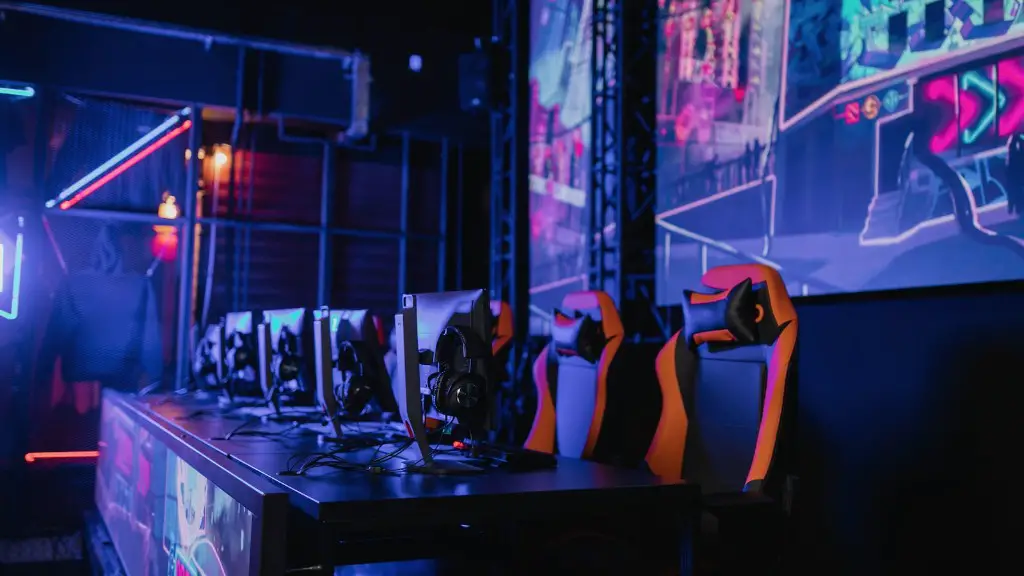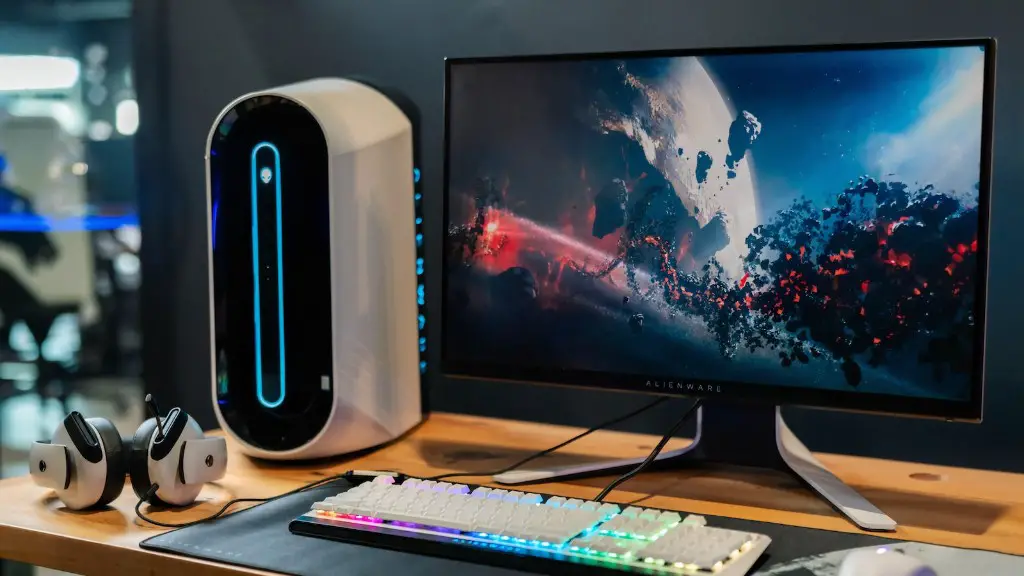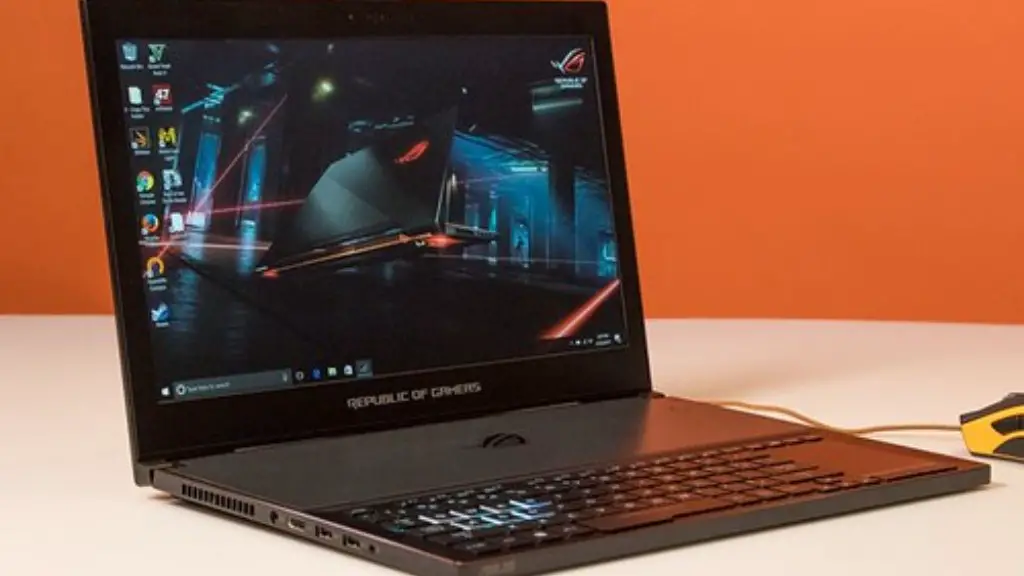A gaming monitor is an essential device for any serious gamer. A gaming monitor is designed to provide a better viewing experience, higher refresh rates and much more. But what is a good size for a gaming monitor? The answer to that isn’t one-size-fits-all; it ultimately depends on what type of gaming you plan to do most.
For most gamers, a 24 inch monitor is the sweet spot, fitting nicely between the large 32-inch monitors and the small 17-inch monitors. 24-inch monitors provide plenty of screen real estate, but don’t take up a huge amount of space. They also tend to have good resolutions, with most modern 24-inch monitors ranging from 1080p to 4k, giving gamers plenty of sharpness and clarity.
If you want a more immersive experience, then 32-inch monitors are the way to go. These monitors provide much larger viewing angles and better immersion, as they provide a much wider field of view than smaller monitors. However, 32-inch monitors are also larger and take up much more space on a desk, making them impractical for some.
For casual gaming and gaming on the go, 17 inch monitors are the perfect choice. While they don’t provide the immersive experience of a 32-inch monitor, they make up for it with portability and convenience. Plus, they’re much cheaper than their larger cousins. On the other hand, 17-inch monitors are often limited to 1080p resolutions, making them less than ideal for serious gamers.
When it comes to choosing the right size for a gaming monitor, there isn’t one answer that will fit everyone’s needs. It ultimately depends on what type of gaming you plan on doing and whether or not you need portability. If you’re looking for a monitor for serious gaming, then a 24-inch monitor is probably the way to go. If you’re looking for an immersive experience, then a 32-inch monitor will do the trick. If portability is a concern, then a 17-inch monitor may be your best option.
What Is The Optimal Resolution For A Gaming Monitor?
The optimal resolution for any gaming monitor depends on the specific monitor in question. As a general rule of thumb, however, most gamers prefer monitors with resolutions of 1080p or higher, as such resolutions provide the most detailed images and the best gaming experience. Monitors with resolutions below 1080p may sometimes be inexpensive, but they’re also often lacking in detail and clarity.
The optimal resolution also depends on the types of games you play. If you’re only playing 2D games or older games with limited graphics, then there’s no need to pay for a high-resolution monitor. On the other hand, if you’re playing modern 3D games or high-resolution textures, then a high-resolution monitor is essential for enjoying the full experience.
It’s worth noting that the optimal resolution isn’t the only factor to consider when choosing a gaming monitor. Refresh rate, response time, and connectivity all play a role in the overall gaming experience, and should be taken into account when selecting the best gaming monitor.
What Is The Optimal Refresh Rate For A Gaming Monitor?
The optimal refresh rate for a gaming monitor depends on the particular game you’re playing. For most games, a refresh rate of at least 75Hz is considered acceptable, though some competitive gamers prefer a refresh rate of at least 120Hz or higher. Higher refresh rates result in smoother motion, reducing the motion blur that can occur when the monitor is unable to keep up with the game.
Higher refresh rates also reduce input lag, which is the delay between when a button is pressed and when the action is displayed on the monitor. Input lag can affect the performance in competitive games, as every millisecond counts. For optimal performance, many competitive gamers use gaming monitors with high refresh rates and low input lag.
It’s also worth noting that refresh rate is not the only factor that affects input lag. Response time also plays a role, as monitors with low response times are able to quickly change image frames, reducing the amount of input lag. In general, gamers should look for gaming monitors with both high refresh rate and low response time for the best performance.
What Is The Optimal Response Time For A Gaming Monitor?
The optimal response time for a gaming monitor depends on the type of game you’re playing. For most games, a response time of at least 5ms is considered acceptable, though some competitive gamers prefer a response time of at least 1ms or 2ms for optimal performance. Lower response times result in faster image transitions, which reduces motion blur and makes the game look smoother.
In addition to response time, it’s also important to consider the panel type when choosing a gaming monitor. Different panel types offer different advantages and disadvantages; for example, TN panels have the fastest response times, while IPS panels offer better colors and viewing angles, but with slower response times. Finding a panel type that balances speed and image quality is the key to finding an optimal gaming monitor.
In addition to response time and panel type, it’s also important to consider other factors, such as refresh rate and screen size. Finding a gaming monitor with all the desired features can be a challenge, but with a little research, it’s possible to find the perfect gaming monitor for a great gaming experience.
What Is The Optimal Panel Type For A Gaming Monitor?
When choosing a gaming monitor, it’s important to understand the different types of panel technologies available and the advantages and disadvantages of each. The three most common panel types for gaming monitors are TN, IPS, and VA. Each panel type offers different strengths and weaknesses, so it’s important to understand the differences in order to choose the right type for your gaming needs.
TN (Twisted Nematic) panels typically offer the fastest response times, making them great for fast-paced games like first-person shooters. However, they usually have narrow viewing angles and limited color accuracy, which can be a problem for some gamers. TN panels are usually more affordable than other panel types, so they’re a great choice for budget-conscious gamers.
IPS (In-Plane-Switching) panels offer better color accuracy and wider viewing angles than TN panels, making them ideal for gamers who need accurate colors, such as modders or professional gamers. However, IPS panels typically have slower response times, so they’re not the best choice for fast-paced games. IPS panels are usually more expensive than TN panels, so they may not be the best choice for budget-conscious gamers.
VA (Vertical Alignment) panels offer good color accuracy and better viewing angles than TN panels, making them a good middle ground between TN and IPS panels. VA panels have decent response times, but not as fast as TN panels. VA panels are also relatively affordable, so they’re a great choice for budget-conscious gamers who need good color accuracy and viewing angles.
What Are The Benefits Of Curved Gaming Monitors?
One of the latest developments in gaming monitors is the introduction of curved displays. Curved monitors offer a number of benefits compared to traditional flat displays, making them a popular choice for gamers. Here are some of the benefits of curved gaming monitors:
The most obvious benefit of curved monitors is their aesthetics. Curved monitors offer a more immersive viewing experience, as the image wraps around the viewer’s field of view. For some gamers, this is crucial for a truly immersive gaming experience.
Curved monitors also offer better viewing angles than flat displays. They allow for better viewing angles and less eye strain, as images are not distorted by the edges of the monitor. This can be important for gamers who spend long hours in front of their monitors.
Curved monitors are also less likely to suffer from image retention or ghosting, as the image wraps around the monitor and doesn’t suffer from the same optical effects as flat displays. This can be important for gamers who rely on quick reactions and perfect precision.
Lastly, curved monitors offer an improved sense of depth and realism. Images look more natural and realistic on a curved monitor, making games more immersive and lifelike. This can be especially important for gamers who crave the most realistic and immersive gaming experience.
Overall, curved gaming monitors offer a range of benefits for gamers. They offer a more immersive and realistic experience, better viewing angles and less eye strain, and less image retention. These benefits make them a great choice for any serious gamer.



